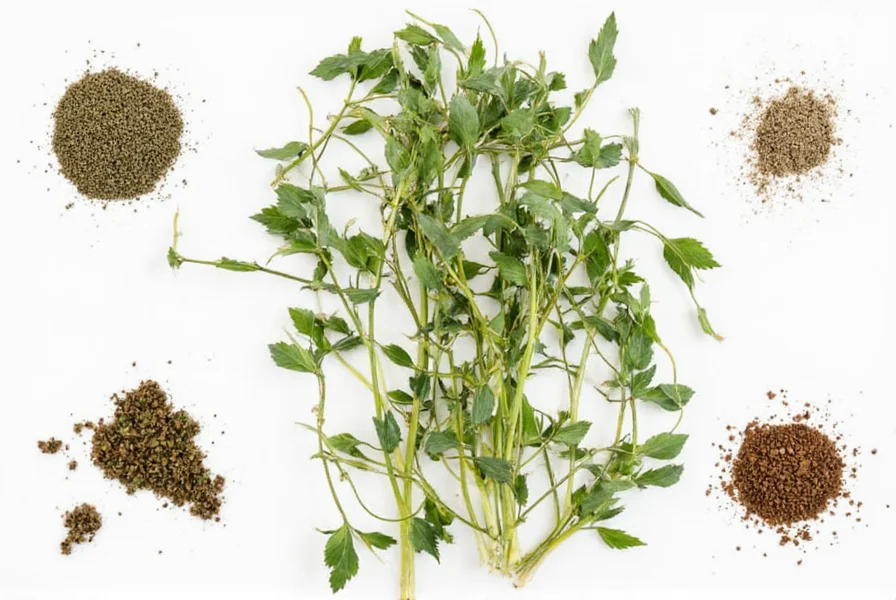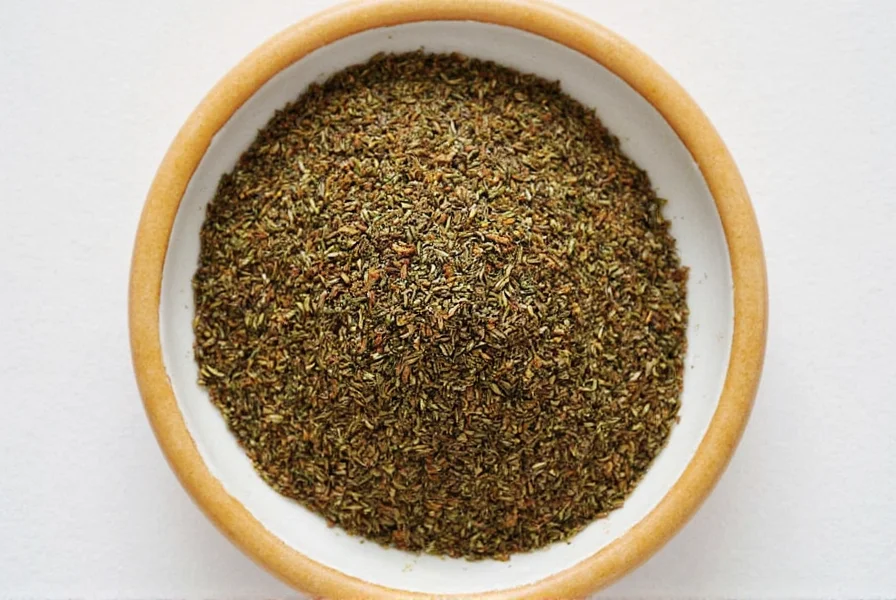Understanding ground anise begins with recognizing its botanical origin. This spice comes from the fruit of the Pimpinella anisum plant, a flowering herb in the celery family native to the eastern Mediterranean and Southwest Asia. When these small, grayish-brown seeds are ground into powder, they release volatile oils containing anethole—the compound responsible for anise's characteristic flavor that's approximately 13 times sweeter than sugar.
Ground Anise vs. Similar Spices: Clearing the Confusion
Many home cooks confuse ground anise with star anise or fennel, but these are distinct ingredients with different flavor profiles and culinary applications. The following comparison clarifies these commonly mixed-up spices:
| Spice | Source Plant | Primary Flavor Notes | Best Culinary Uses |
|---|---|---|---|
| Ground Anise | Pimpinella anisum seeds | Sweet licorice, warm, slightly floral | Baking, Mediterranean dishes, liqueurs |
| Star Anise | Illicium verum fruit pods | Sharper licorice, more medicinal | Chinese five-spice, pho, mulled drinks |
| Ground Fennel | Foeniculum vulgare seeds | Milder licorice, herbal, slightly sweet | Italian sausages, fish dishes, breads |
Culinary Applications of Ground Anise
Professional chefs value ground anise for its ability to distribute flavor more uniformly than whole seeds in baked goods and sauces. In traditional Mediterranean baking, it's essential for Italian pizzelle, Greek melekouni, and Turkish kurabiye. The fine powder integrates seamlessly into doughs and batters without creating unpleasant seed fragments.
When exploring how to use ground anise in baking, remember that its potency means you typically need only half the amount called for with whole seeds. For example, where a recipe specifies 1 teaspoon of anise seeds, use just ½ teaspoon of ground anise. This adjustment prevents overwhelming other flavors while maintaining the distinctive aromatic quality that makes anise so valuable in spice blends.

Optimal Storage Techniques for Maximum Freshness
Ground spices lose potency faster than whole spices due to increased surface area exposure. To preserve ground anise's volatile oils and maintain its characteristic flavor profile for up to six months:
- Store in an airtight container away from light and heat
- Keep in a cool, dark cupboard (not above the stove)
- Never store near dishwasher vents or windows
- Consider freezing for long-term storage (up to 1 year)
Test your ground anise's freshness by rubbing a small amount between your fingers and smelling. Fresh powder should release a strong, sweet aroma immediately. If the scent is faint or musty, it's time to replace your supply—a critical consideration when following authentic recipes that depend on proper anise flavor intensity.
Substituting Ground Anise in Recipes
When you need a ground anise substitute for recipes, several options exist depending on availability and desired flavor profile. The best alternatives include:
- Fennel seed powder (use 1:1 ratio) - milder flavor, works well in savory applications
- Anise extract (¼ teaspoon extract per ½ teaspoon ground anise)
- Star anise powder (use ⅓ less quantity due to stronger flavor)
- Tarragon (for savory dishes only, use sparingly)
Understanding ground anise vs star anise difference is crucial here—while both contain anethole, star anise has additional compounds that create a more complex, slightly bitter note. For authentic Mediterranean baking, nothing replicates true ground anise's delicate sweetness.
Nutritional Profile and Traditional Uses
While primarily valued for flavor, ground anise offers modest nutritional benefits per tablespoon (6g):
- 20 calories
- 1g dietary fiber
- Trace minerals including iron and manganese
- Antioxidant compounds including anethole and estragole
Traditional medicine systems have used anise for centuries to support digestive health. Modern research suggests potential benefits for reducing bloating and supporting respiratory function, though more clinical studies are needed. Always consult a healthcare provider before using ground anise for therapeutic purposes, especially if pregnant or taking medications.
Creating Homemade Ground Anise
Making ground anise at home ensures maximum freshness and flavor intensity. Follow these steps for optimal results:
- Select high-quality whole anise seeds with a strong aroma
- Dry roast seeds in a skillet over low heat for 2-3 minutes until fragrant
- Cool completely before grinding (warm seeds create clumps)
- Use a spice grinder or mortar and pestle for best texture
- Grind in small batches to prevent overheating the spice
For those exploring how to make ground anise at home, remember that freshly ground powder loses potency within weeks, so prepare only what you'll use in the next month. The superior flavor justifies the effort for special baking projects where anise plays a starring role.
What's the difference between ground anise and star anise?
Ground anise comes from Pimpinella anisum seeds and has a sweeter, more delicate licorice flavor, while star anise is the fruit pod of Illicium verum with a stronger, more medicinal taste. They're not interchangeable in equal amounts—use ⅓ less star anise when substituting for ground anise.
How much ground anise equals whole anise seeds in recipes?
Use half the amount of ground anise compared to whole seeds. For example, where a recipe calls for 1 teaspoon of anise seeds, substitute with ½ teaspoon of ground anise to achieve balanced flavor without overpowering other ingredients.
Can I use ground anise instead of anise extract?
Yes, but the conversion differs. Use ½ teaspoon of ground anise for every ¼ teaspoon of anise extract. Note that extract delivers more concentrated flavor, so you may need to adjust other liquid ingredients when substituting in baking recipes.
Why does my ground anise have no flavor?
Ground anise loses potency quickly due to oxidation. If your spice has no aroma, it's likely old—ground spices typically remain flavorful for only 6 months. Store in an airtight container away from light and heat, or freeze for longer preservation. Always check freshness by rubbing a small amount between your fingers before use.
What are the best recipes for ground anise?
Ground anise shines in Mediterranean baking like Italian biscotti, Greek melekouni cookies, and Turkish simit bread. It also enhances Middle Eastern lamb stews, German pfeffernüsse cookies, and Scandinavian aquavit. For beginners, try adding ¼ teaspoon to apple pie filling or oatmeal cookies for a subtle flavor enhancement.











 浙公网安备
33010002000092号
浙公网安备
33010002000092号 浙B2-20120091-4
浙B2-20120091-4